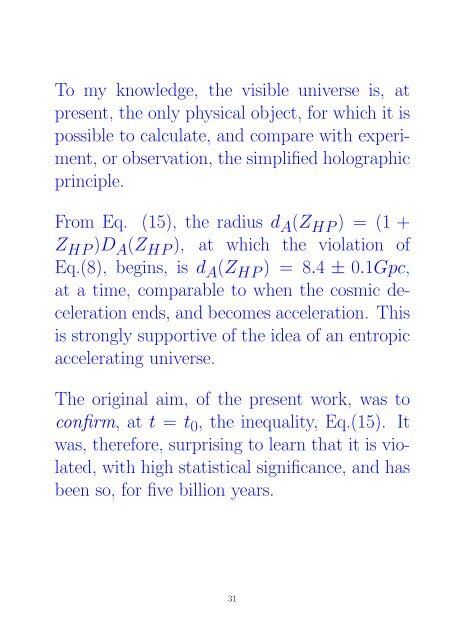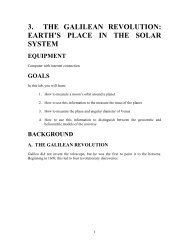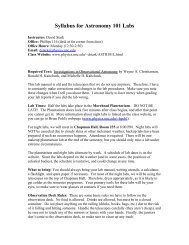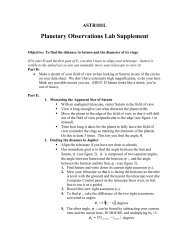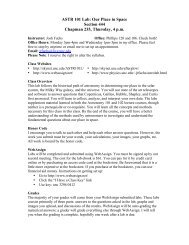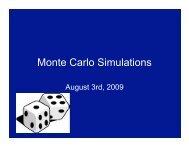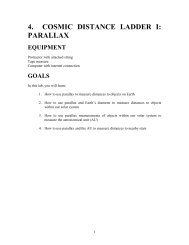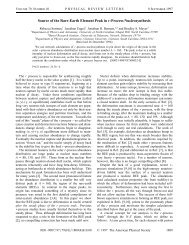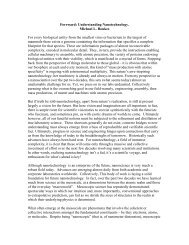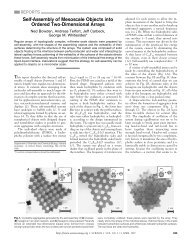holographic principle and the surface of last scatter
holographic principle and the surface of last scatter
holographic principle and the surface of last scatter
You also want an ePaper? Increase the reach of your titles
YUMPU automatically turns print PDFs into web optimized ePapers that Google loves.
To my knowledge, <strong>the</strong> visible universe is, at<br />
present, <strong>the</strong> only physical object, for which it is<br />
possible to calculate, <strong>and</strong> compare with experiment,<br />
or observation, <strong>the</strong> simplified <strong>holographic</strong><br />
<strong>principle</strong>.<br />
From Eq. (15), <strong>the</strong> radius d A (Z HP ) = (1 +<br />
Z HP )D A (Z HP ), at which <strong>the</strong> violation <strong>of</strong><br />
Eq.(8), begins, is d A (Z HP ) = 8.4 ± 0.1Gpc,<br />
at a time, comparable to when <strong>the</strong> cosmic decelerationends,<br />
<strong>and</strong>becomesacceleration. This<br />
is strongly supportive <strong>of</strong> <strong>the</strong> idea <strong>of</strong> an entropic<br />
accelerating universe.<br />
The original aim, <strong>of</strong> <strong>the</strong> present work, was to<br />
confirm, at t = t 0 , <strong>the</strong> inequality, Eq.(15). It<br />
was, <strong>the</strong>refore, surprising to learn that it is violated,<br />
with high statistical significance, <strong>and</strong> has<br />
been so, for five billion years.<br />
31


